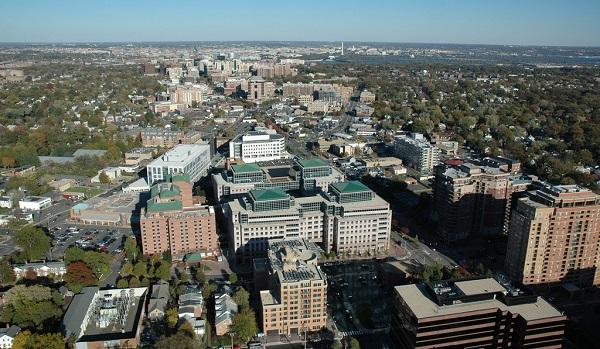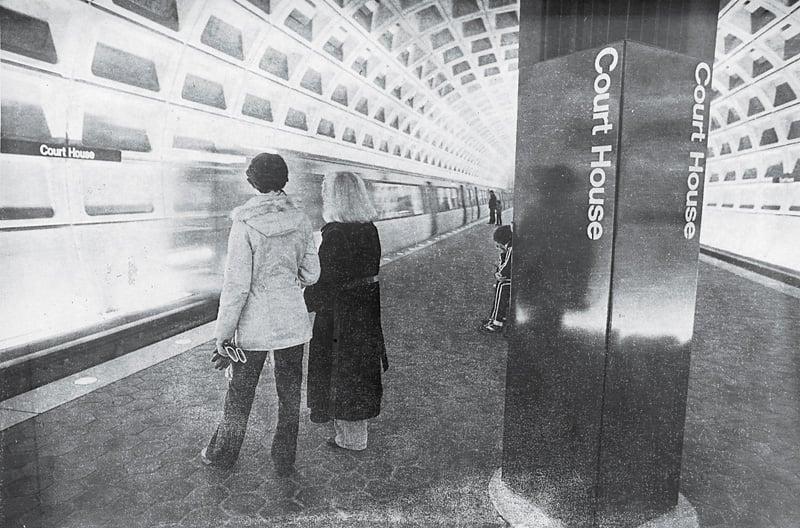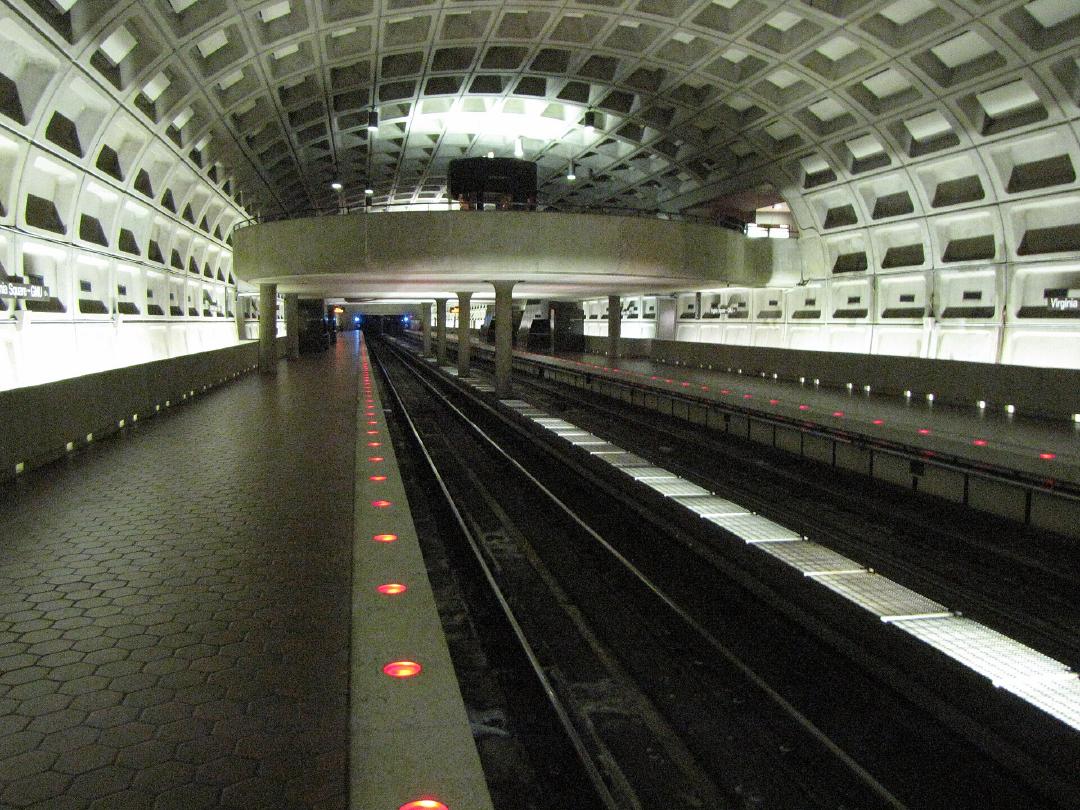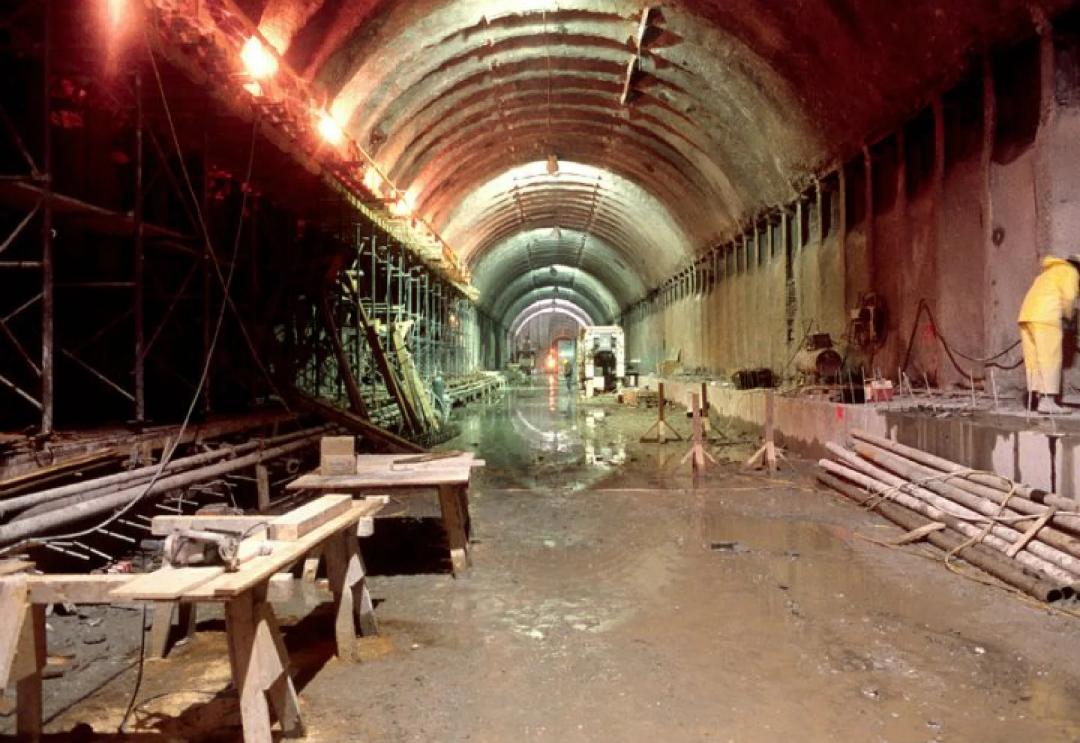The Story of Smart Growth and the Metro

In the late 1960s, as the Metro was planned in the region, Arlington’s main commercial corridor, Wilson Boulevard, struggled. The new suburban malls and regional shopping destinations challenged the aging department stores and other small commercial buildings along the corridor.
The expansion of the Federal government and the increase in Arlington's population in the mid-20th century led to dramatic changes in the region. After the closure of the trolley lines in Arlington County, buses were the primary means of public transportation.
In the mid-1960s, the Washington Metropolitan Area Transit Authority (WMATA) proposed a rapid rail system with two lines in Arlington County: one line following I-66 to Fairfax and another servicing the Pentagon, National Airport, and Crystal City. Arlington County officials, however, successfully lobbied for the proposed I-66 line to follow Wilson Boulevard and Fairfax Drive instead (the former route of the WA&FC trolley line) to stimulate development along the aging corridors. Many of Arlington's Metro Stations, including Ballston and Virginia Square, opened in 1979, transforming the community from small shops and businesses into a thriving urban village.
In the late 1960s, as the Metro was planned in the region, Arlington’s main commercial corridor, Wilson Boulevard, struggled. The new suburban malls and regional shopping destinations challenged the aging department stores and other small commercial buildings along the corridor. Arlington’s leaders—later supported by their citizens—saw an excellent opportunity to turn Metro’s rail system's addition through their county into a magnet for growth and economic development—but in a very specific way.
The Story of Arlington's Smart Growth
The leaders at the time engaged their citizens in a lengthy planning process to ensure the kind of growth they wanted in Arlington. They preserved most of the county as it was but leveraged Metro's investment into specific areas that would change. The result—especially in the Rosslyn-Ballston corridor—is a prime example of a long-term vision realized for better growth that benefits nearly everyone.
Arlington changed the zoning around each metro station and adopted a plan to require a mix of uses, both residential and office space, and a walkable form of development. However, their plan also preserved the older neighborhoods in the county, steering growth into this specific corridor.
By 2010, the Metro corridor had about 7.6 % of the county’s land and was responsible for 33% of its real estate tax revenues. And from 1970-2000, 15 million square feet of office space and 15,000 units of housing were built on just 2 square miles of land in a county that was considered at the time to be “built-out.” (Source – Reconnecting America, 2003) One would think that growing from 160,000 people in 1960 to about 206,000 (2010) would bring a massive spike in traffic. Yet Arlington managed to add thousands of new people, shops, offices, and other destinations into this corridor and simultaneously reduced traffic on Wilson Boulevard.
The average daily traffic on Wilson Boulevard shrank from 19,785 in 1980 to 18,873 in 2000. 73% of the trips to the Metro in this corridor are on foot, and almost half of the residents take the Metro to work daily. If there were a few specific keys to their success, among them would indeed be fighting to have the rail line put underground through their county, pushing for a route through the area they wanted to be revitalized, and making a clear plan and vision for what they wanted to happen as a result.
However, the involvement of the community was the most critical component. An Arlington resident would probably tell you that the real key is “the Arlington Way,” which refers to how the County emphasizes citizen input and participation. All the stakeholders are brought to the table, and Arlington residents are active in the public process and making their voices heard. Not only did their residents and leaders choose a future for their city, but you have many options if you want to live in Arlington. You can live in a suburban house with a two-car garage and a yard, a townhouse, a small apartment building, or a tall condo building on top of the Metro. And when you want to get around, you can drive, walk, bike, or take a train or bus. Having a choice is really what smart growth is all about. It allows people to choose the type of growth they want in their community and then choose where and how to live.
Images




Documents
| Name | Info | Actions |
|---|---|---|
| Tri-State-Transportation-Campaign-Presentation-Arlington-Va-11-15-13.pdf | pdf / 5.09 MB | Download |